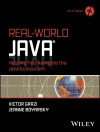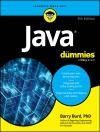Cold Fusion is an extremely powerful web-development tool. Despite
its short initial learning curve, attributed to its accessible
HTML-like, tag-based syntax, it provides sophisticated
content-management solutions for large-scale enterprises. This has
never been truer than it is now, since the release of Cold Fusion
MX. To take advantage of this power, you must step outside the box
to learn skills as diverse as application design and Web Services
development–topics addressed only briefly, if at all, in standard
Cold Fusion tutorials and reference books.
Cold Fusion MX Developer’s Handbook teaches you what you
need to broaden your Cold Fusion skills and become a fully capable
enterprise developer. Inside, 13 Cold Fusion experts provide highly
detailed, advanced instruction that will save you countless
headaches and let you squeeze every last drop of functionality from
the newest release. You’ll master database integration techniques
involving advanced SQL queries, stored procedures, and database
upsizing. You’ll take advantage of MX’s improved integration with
other technologies, incorporating Flash using Flash Remoting, and
capitalizing on full XML support to create Web Services. In your
custom coding, you’ll build and deploy Java and C++ extensions and
wirelessly extend Cold Fusion’s reach with components that talk to
WAP and WML clients.
All this comes wrapped in practical, hard-to-find advice for
managing your content and applications and optimizing performance.
Large applications with heavy traffic need speed and efficiency,
and you get that with performance turning, load balancing, and
caching. If you’re working in a clustered environment, you need to
understand state management. No matter what your situation, you’ll
benefit from in-depth coverage of application security, debugging,
and coding methodology using Fusebox.
Every chapter is packed with the technical knowledge to give you
what you need to create serious solutions. You might find that one
particular chapter alone is worth the cost of the book because of
the time and frustration it will save you. Most readers, however,
will use various parts of this book at different times, depending
on the constantly changing challenges faced by enterprise
programmers. The mission of this book is to provide the extra
skills you need to be a successful Cold Fusion developer in today’s
demanding and expanding environment.
Cuprins
Introduction.
Part I: Managing Content and Applications.
Chapter 1: Designing and Planning a Cold Fusion Application.
Chapter 2: Tr oubleshooting and Debugging Cold Fusion MX
Code.
Chapter 3: State Management in a Clustered Environment.
Chapter 4: The Fusebox Framework and Development
Methodology.
Chapter 5: Developing Component-Based Applications.
Chapter 6: Creating Search Engines with Verity.
Chapter 7: Advanced WDDX.
Chapter 8: Application Security Techniques.
Chapter 9: Archives and Deployment.
Chapter 10: Source Code Management.
Part II: Advanced Database Integration.
Chapter 11: Advanced SQL.
Chapter 12: Stored Procedures.
Chapter 13: Upsizing Databases to SQL Server.
Part III: Client-Side Coding.
Chapter 14: Using Java Script and DHTML with Cold Fusion.
Chapter 15: Working with WAP and WML Clients.
Part IV: Enhancing Performance.
Chapter 16: Performance Tuning.
Chapter 17: Clustering:Load Balancing and Failover.
Chapter 18: Caching Techniques.
Part V: Custom Server-Side Coding.
Chapter 19: Working with Java Objects.
Chapter 20: Building Java Extensions.
Chapter 21: Building C++Extensions.
Chapter 22: Using cfexecute.
Part VI: Integrating with External Services.
Chapter 23: Integrating with Flash MX.
Chapter 24: Web Services.
Appendices.
Appendix A: Configuring Cold Fusion for Java.
Appendix B: Understanding UML Class Diagrams.
Appendix C: Using the Code from This Book.
Index.
Despre autor
Raymond Camden and Arman Danesh are the best-selling
authors of Mastering Cold Fusion, from Sybex. Camden is also
a compliance engineer at Macromedia and a certified Cold Fusion
instructor.
Hal Helms is a member of Team Allaire and has written
articles for Cold Fusion Developer’s Journal.
Emily Kim is vice president of GT Alliance, a key
Macromedia training partner.
Guy Rish is an independent consultant and carries
developer and instructor certifications from Macromedia and
Rational.












